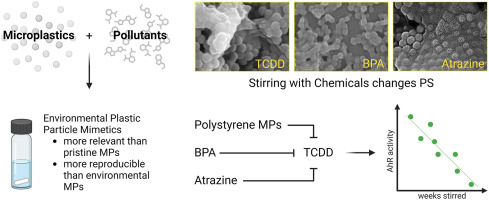In traditional toxicology, the focus has been on evaluating the adverse effects of individual chemicals and establishing safe exposure levels. However, there is a growing recognition that real-world exposures involve complex mixtures of chemicals, which may interact in additive, synergistic, or antagonistic ways. This shift has prompted researchers to explore mixture effects more comprehensively.
A recent study by Morgan and DeLouise (2024), published in Chemosphere, investigates the interaction between two major environmental contaminants: persistent organic pollutants (POPs) and microplastics (MPs). Using a luciferase reporter assay linked to the aryl hydrocarbon receptor (AhR) in the mouse cell line H1L1.1c2, the researchers examined how polystyrene (PS) microplastics influence the bioavailability and activity of the potent AhR agonist TCDD (a dioxin).
TCDD was pre-incubated with PS microplastics for varying durations—1 week, 30 days, and 19 weeks—before being applied to the cells. Remarkably, the longest incubation (19 weeks) resulted in almost no AhR activation, suggesting that the microplastics had sequestered the TCDD, thereby reducing its bioactivity.
The study further explored the interaction with bisphenol A (BPA), an AhR antagonist. When BPA and TCDD were co-administered, BPA effectively inhibited AhR activation. However, when both were pre-incubated with PS, the microplastics appeared to absorb both compounds, preventing TCDD from activating AhR and BPA from exerting its antagonistic effect.
These findings highlight the potential of microplastics to bind and sequester hazardous chemicals, potentially altering their toxicological profiles. Whether this represents a protective mechanism or a delayed-release hazard remains an open question, warranting further investigation.
Continue your reading here:
-
- Morgan, S.E., & DeLouise, L.A. (2024). Effects of microplastic interaction with persistent organic pollutants on the activity of the aryl hydrocarbon and estrogen receptors. Chemosphere, 365, 14338. https://doi.org/10.1016/j.chemosphere.2024.143338

